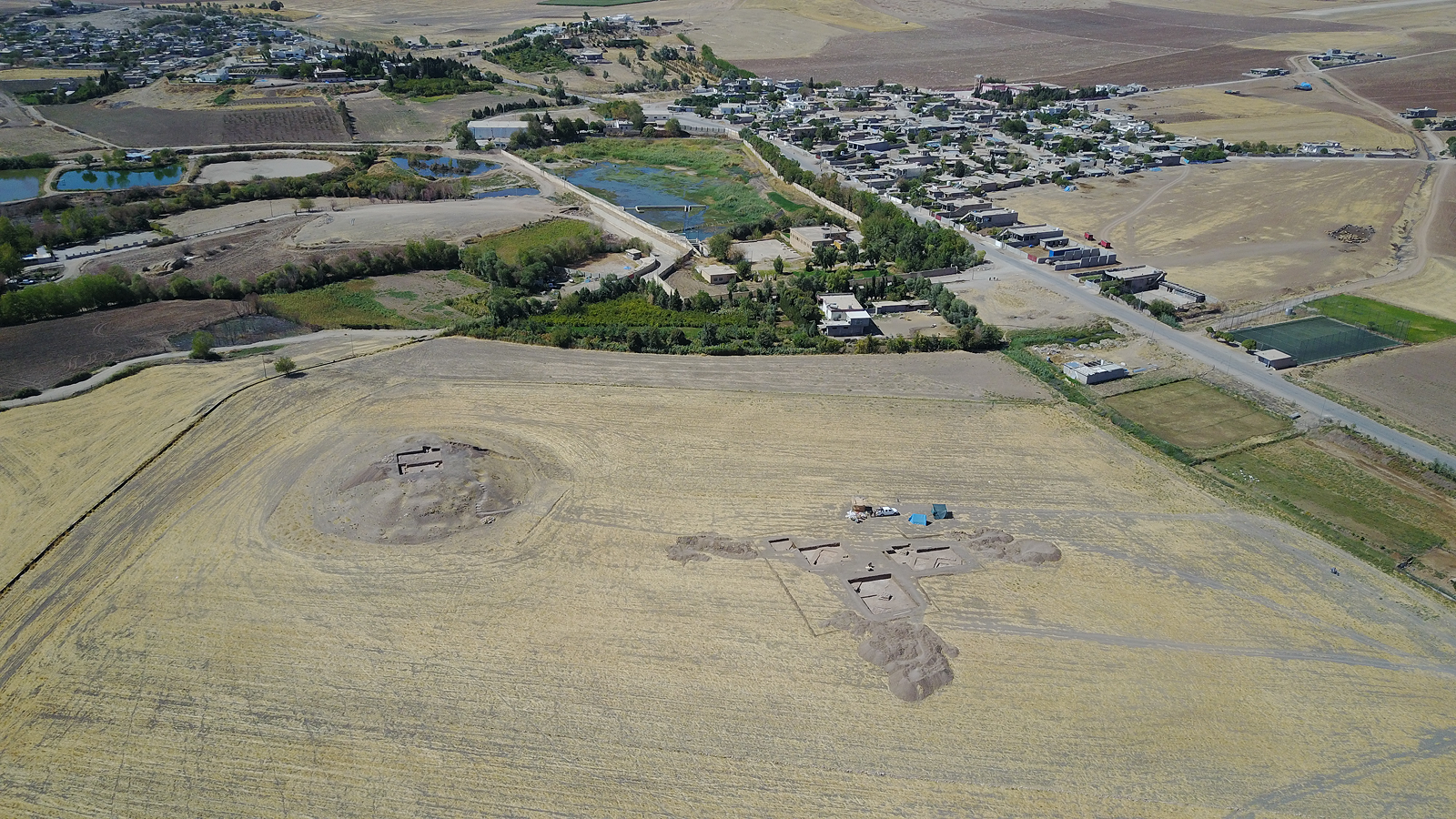How did humans first reach the Americas?
During the last ice age, which route was taken by the first humans to reach the Americas, and did they travel by foot, boat or both?
Humans first arrived in North America at least 15,500 years ago. Exactly how they got there, however, constitutes one of the longest-standing debates in archaeology.
For decades, scientists assumed that people first arrived in the Americas by walking south from the now-flooded land bridge in the Bering Strait that once connected Russia to Alaska when sea levels were lower during the last ice age. But recent evidence suggests that these people were not the first to set foot on the continent.
According to the now-dominant "coastal route theory," that distinction belongs to humans who boated down the Pacific coast several millennia earlier. A 2023 study, for instance, found that coastal conditions were favorable during two time windows: from 24,500 to 22,000 years ago, and from 16,400 to 14,800 years ago. And while the science is far from settled, the evidence increasingly points to the first Americans arriving by sea or land along the coast.
"The pendulum is swinging in support of the coastal corridor being the route taken by the first Americans," Michael Waters, director of the Center for the Study of the First Americans at Texas A&M University, told Live Science in an email. "But we still need the smoking gun: an early site along the coast."
Until 20 years ago, the best available archaeological evidence suggested that humans first arrived in North America about 13,000 years ago. The rise of the Clovis people — whose 13,400-year-old remains were discovered in Clovis, New Mexico, in the early 1900s — coincided perfectly with the formation of an ice-free corridor along the Rocky Mountains.
Scientists assumed that these humans crossed the Bering Land Bridge into what is now Alaska, and then turned south to march onward to New Mexico through that convenient corridor. This remains the prevailing theory as to how the Clovis people made it to the Americas. "It seems very likely that people did arrive from northeast Asia via the ice free corridor once this route was open and viable," Todd Braje, chair of anthropology at San Diego State University, told Live Science in an email.
Related: Why did the Maya civilization collapse?
Get the world’s most fascinating discoveries delivered straight to your inbox.
But recent excavations suggest that the Clovis were not the first Americans. A 2011 paper in the journal Science presented evidence of tools crafted by humans in Texas from up to 15,500 years ago, and a 2021 paper in Science described 23,000-year-old footprints in New Mexico. (However, the footprint date is disputed by a 2022 study in the journal Quaternary Research, which posits that the plant seeds the original team used to radiocarbon-date the footprint layer are problematic.)
These "pre-Clovis people" would have had to migrate to America long before the ice-free corridor opened up. "The earliest the inland corridor was open is 14,300 years ago," Waters said. "It is impossible to have people in Texas and Idaho at 16,000 years ago, and Florida at 14,600 years ago, come through the corridor. They must have come a different way."
How the pre-Clovis people got to America without an inland corridor to take them south from the Bering Strait remains an open question. "With the breaking of the Clovis barrier in the 1990s, we know people were in the Americas prior to at least 14,000 years ago, but when people first arrived and by what route or routes remains unknown," Braje said. "There are now lively debates on the topic but the bottom line is that no one knows definitely."
The prevailing theory is that the pre-Clovis people arrived by watercraft. "The route taken by the initial migrants was almost certainly along the coast," said Matthew Des Lauriers, director of the Applied Archaeology Program at California State University, San Bernardino.
Des Lauriers described the pre-Clovis as sophisticated maritime hunter-gatherers, who would have cast off south from the Bering Land Bridge and subsided on fish and game as they voyaged down the Pacific coast. Ultimately, Des Lauriers said, these intrepid seafarers parted ways. Some pre-Clovis people followed rivers inland, while others continued south as far as Chile.
"The ocean would always have provided resources for skilled fishermen and hunters," Des Lauriers told Live Science in an email. "The most likely scenario is one of coastal fisher-hunter-gatherers moving along the North Pacific Coast."
Recent work from geologists has lent support to the theory that the Clovis people arrived via an inland corridor, while the pre-Clovis people took a coastal route. Beryllium-10 dating of glacial boulders along the ice-free corridor suggests that the corridor opened about 13,800 years ago. And studies suggest that a strip of unglaciated land should have existed along the Pacific coast of Alaska and British Columbia 16,000 years ago — prime real estate for a coastal corridor.
Related: Columbus 'discovered' the New World … so why isn't America named after him?
As the field of ancient genetics has blossomed, multiple studies have provided additional evidence that the first Americans arrived between 15,000 and 17,000 years ago.
"It is gratifying to see the archaeological and genetic evidence converging to tell the same story," Waters said. "Finally, we have a much better understanding of the chronology of the opening of the two corridors, and the evidence now supports a coastal migration route."
Nonetheless, physical evidence for both corridors is still lacking. Significant archaeological, genetic and geologic legwork will be necessary before we can firmly point to the lives and times of the first Americans and begin to describe, with confidence, how they arrived in America.
"There are very few sites along the Pacific Coast that are pre-Clovis in age, and much work needs to be accomplished to find potential early coastal sites," Braje said. "We have no definitive answers about when and how people first arrived in the Americas."

Joshua A. Krisch is a freelance science writer. He is particularly interested in biology and biomedical sciences, but he has covered technology, environmental issues, space, mathematics, and health policy, and he is interested in anything that could plausibly be defined as science. Joshua studied biology at Yeshiva University, and later completed graduate work in health sciences at Cornell University and science journalism at New York University.




